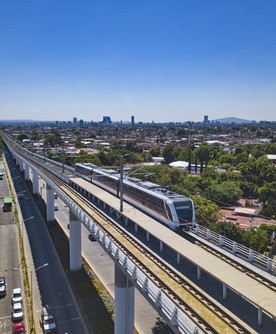The Mayan train project
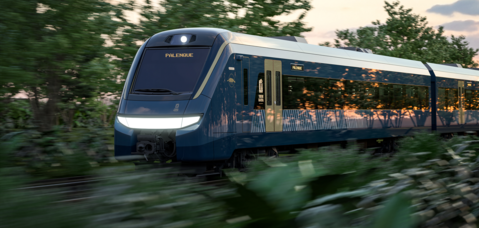
The Mayan Train: A train for Mexico, built in Mexico
At Alstom we understand the local and individual challenges of delivering and maintaining rail infrastructure with the highest standards of quality, safety, comfort and world-class technology. The Mayan Train project (Tsíimin K'áak, in the Mayan language) will be one of the most important infrastructure works in the history of Mexico's rail network, and a unique opportunity to boost economic growth in the southeast region by creating jobs and support for local manufacturing, while preserving natural areas, ecosystems and the environment, promoting tourism and safeguarding local indigenous cultures.
In Maya, "Meentik muuch tsiimin kaak utia al tulakan" means "Let's Build the Train Together!"
-
42X'trapolis trains will be designed and built at the Ciudad Sahagún plant, in Hidalgo
-
1,525 kmwill be covered by the Mayan Train, connecting the states of Chiapas, Tabasco, Campeche, Yucatán and Quintana Roo
-
300passenger capacity per car
-
4,000direct jobs and about 7,500 indirect jobs will be generated with this project
Relevant stages
In May 2021, the consortium made up of Bombardier Transportation Mexico, Alstom Transport Mexico, Gami Ingeniería e Instalaciones and Construcciones Urales Procesos Industriales won the international public tender for the one billion euro contract, issued by the National Fund for the Promotion of Tourism (Fonatur), the government agency responsible for the Mayan Train. The contract encompasses the design, manufacture and delivery of 42 X'trapolisTM trains, the railway systems, workshops and garages that will be part of the Mexican government's emblematic project.
The first section of the Mayan Train will start operating in December 2023, transporting both local residents and tourists. The train will travel 1,545 kilometres, connecting the states of Chiapas, Tabasco, Campeche, Yucatán and Quintana Roo.
One of the main reasons for the selection of the consortium was that it was able to guarantee that the 42 trains will be manufactured locally, which will be carried out at the Ciudad Sahagún site, in the state of Hidalgo (located in the central area of the national territory), thus achieving the objective of being a "Train for Mexico, built in Mexico."
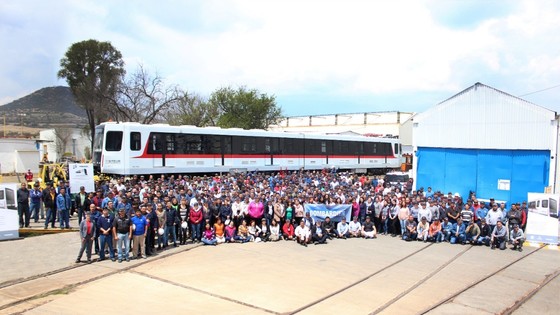
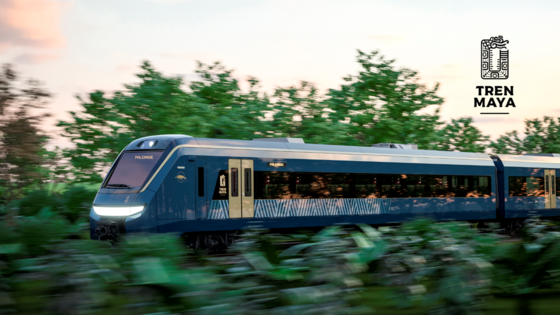
The Ciudad Sahagún plant is one of the most iconic railroad construction sites in Mexico. It has 464,515 square metres and between 1998 and 2015, more than 2,000 locomotives have been built there.
The X'trapolisTM is Alstom's electric train that will have a unique and exclusive design for Mexico. It is an updated, competitive and long-term reliable train, based on trains that have already proven their worth. So far, 5,500 X'trapolisTM cars have been ordered worldwide.
Its exterior design is inspired by the Mayan culture, in the majesty of the jaguar, as an endemic element of the region, in its elegance, speed and beauty. The 42 trains to be manufactured by Alstom will reflect the varied colors and textures of regional art.
The Mayan Train will have three types of trains:
- Xiinbal (walking): standard regular service train that will allow passengers to enjoy a journey with large panoramic windows.
- Janal (eating): a restaurant car, with a design inspired by the work of engineer and architect Luis Barragán; it has comfortable spaces designed to enjoy regional cuisine.
- P'atal (staying): train for long distances, with comfortable cabins, day and night, that will make the trips a unique experience.
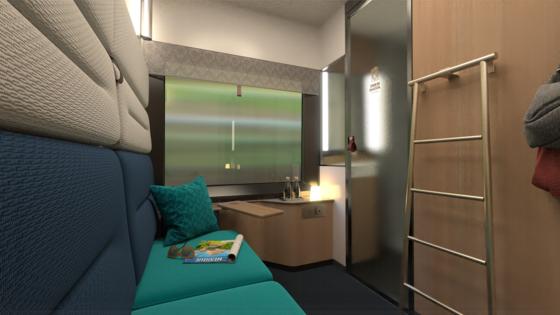
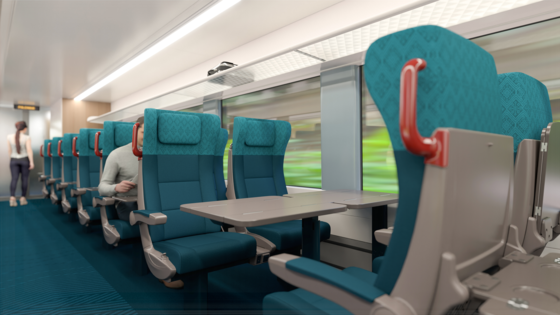
The interior design is inspired by a range of shades of blue, characteristic of the sea that surrounds the region and different organic forms. This concept combines a range of varied colors that pay tribute to modernity and tradition, as well as the beautiful landscape of the Mexican southeast. When entering the common areas, such as lobbies and cafeteria, a mix of hues is used to give a feeling of welcome and warmth. The result of all these combinations is a contemporary train with a strong identity.
All three versions of the X'trapolisTM offer ample seating and luggage space, as well as vertical shelves on each carriage and upper shelves taken from Alstom's CoradiaTM. Since the floor is completely flat, passengers with reduced mobility will have complete freedom of movement.
This train will also use components and know-how contributed by the old Bombardier, the highlight being its lightweight Flexx Eco bogie, designed for a top speed of 176 km/h.
Construction by the Alstom-Bombardier-led consortium will generate 4,000 direct jobs and almost 7,500 indirect jobs. With this work, the economy will be activated not only in the five southeastern states where the train will run, but in all the states of the national territory where Alstom has operations, such as Hidalgo, Mexico City, State of Mexico, Chihuahua Jalisco, Nuevo León, Puebla and Veracruz among others.
This modern train will contribute to the social and economic development of the southeast and the entire country, and will allow the development of a large rail supply chain, with national suppliers.
This comprehensive mobility project will offer security, technology, comfort and above all, it will connect families, people and traditions. The Mayan Train will help communities to be stronger, more solid and more sustainable.
More information available at: Proyecto Regional Tren Maya | Fondo Nacional de Fomento al Turismo | Gobierno | gob.mx (www.gob.mx)
AlstomTM, X'trapolisTM and CoradiaTM are protected trademarks of the Alstom Group.
